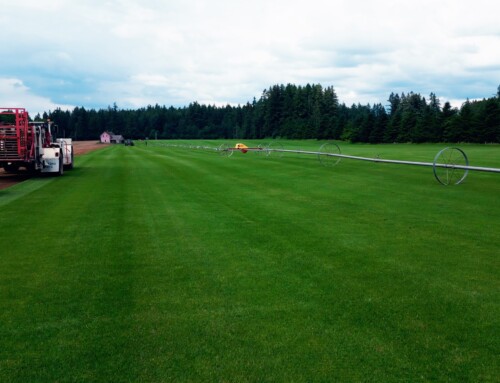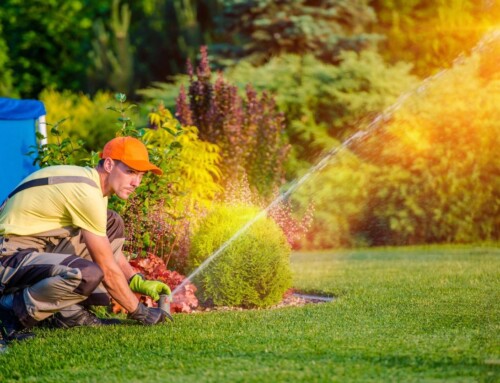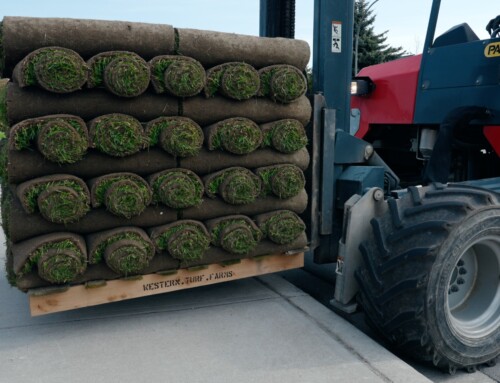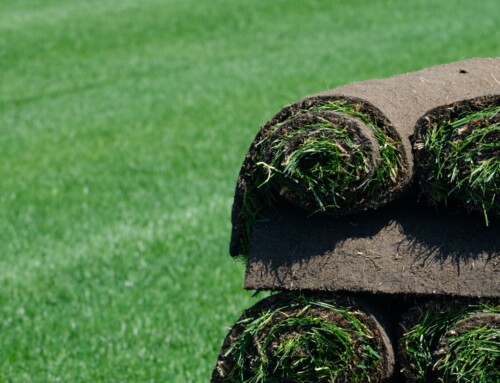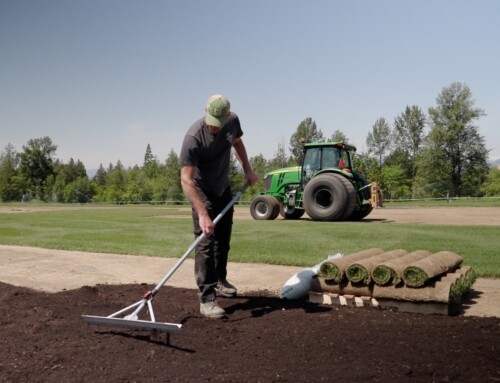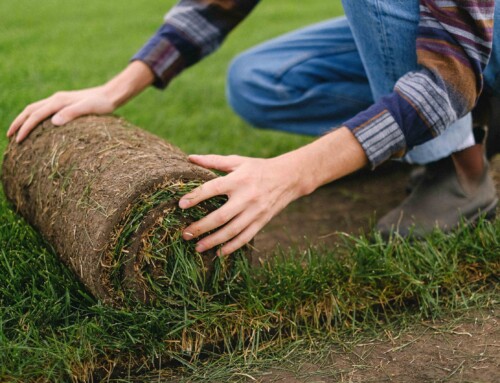If you’re looking for an easy and effective way to improve the health and appearance of your lawn, overseeding may be the solution you need. Overseeding involves spreading grass seed over an existing lawn to promote thicker, more vibrant growth. Here’s what you need to know to get started:
Why Overseed Your Lawn?
Overseeding can provide a number of benefits for your lawn, including:
- Improved Appearance: Over time, lawns can become thin and patchy due to foot traffic, weather conditions, and other factors. Overseeding can help to fill in bare spots and create a more uniform, attractive lawn.
- Enhanced Resilience: A dense, healthy lawn is better able to resist pests, diseases, and environmental stresses such as drought and extreme temperatures.
- Increased Biodiversity: Adding a variety of grass species to your lawn can help to promote biodiversity and support a healthy ecosystem.
How to Lay Grass Seed for Overseeding
Once you have selected the appropriate grass seed and prepared your lawn for overseeding, it’s time to lay the seed. Here are some tips for effective overseeding:
- Use the Right Amount of Seed: Use a seed spreader or a similar tool to distribute the grass seed evenly across your lawn. Be sure to follow the recommended seeding rate on the seed package. Using too much seed can lead to overcrowding and poor growth, while using too little can result in thin, patchy areas.
- Cover the Seed: After the seed is distributed, use a rake or other tool to lightly cover the seed with soil or compost. This will help protect the seed from birds and other pests and will also help keep the seed moist.
- Water Regularly: Water the lawn immediately after overseeding and continue to water regularly, keeping the soil moist but not waterlogged. Watering in the early morning or late afternoon is recommended to minimize evaporation.
- Maintain Soil Temperature: Try to maintain the soil temperature between 60 and 75 degrees Fahrenheit during the germination process. Covering the newly seeded areas with a light layer of straw or mulch can help maintain the temperature and moisture levels.
- Avoid Heavy Traffic: Try to avoid heavy foot traffic on newly overseeded areas until the grass is well-established. This will give the new seedlings time to grow and strengthen their roots.
By following these tips, you can ensure that your overseeding efforts are successful and result in a thick, healthy lawn. Remember that proper lawn care, including regular mowing and fertilizing, is essential for maintaining a beautiful lawn.
Best Practices for Overseeding
To get the most out of your overseeding efforts, it’s important to follow these best practices:
- Choose the Right Time: The best time to overseed depends on the type of grass in your lawn and your climate. Generally, the ideal time to overseed cool-season grasses is in the fall, while warm-season grasses should be overseeded in the late spring or early summer.
- Prepare the Lawn: Proper preparation is essential for successful overseeding. Start by mowing the lawn short and removing any debris, thatch or dead grass. Consider aerating the lawn if the soil is compacted, to improve seed to soil contact and improve the soil’s ability to hold moisture.
- Choose the Right Seed: Choose a high-quality grass seed that is appropriate for your climate and soil type. Consider selecting a seed mix that includes several different grass species, to promote a more diverse and resilient lawn.
- Apply Seed Evenly: Use a lawn spreader to apply the grass seed evenly over the lawn. Over-applying seed can lead to overcrowding and competition among the seedlings, while under-applying can result in bare spots.
- Water Regularly: Water the lawn regularly, but avoid overwatering, which can cause the seed to wash away or lead to fungal growth. It is generally recommended to water lightly and frequently until the grass is established, then transition to deeper, less frequent watering.
- Avoid Mowing Until Established: Avoid mowing the lawn until the grass is established and has reached a height of 3-4 inches. This typically takes 3-4 weeks, but can vary depending on environmental conditions.
Alternatives to Overseeding
If you don’t want to overseed, there are a few alternative solutions to consider, including sodding, lawn renovation, chemical treatments, and accepting a less-than-perfect lawn. However, overseeding is generally considered to be a more cost-effective and practical solution for improving the health and appearance of a lawn.
Best Times of Year to Overseed Your Lawn
The timing of overseeding can be critical to its success. The best time to overseed your lawn depends on the type of grass you have and your climate. Here are some general guidelines to follow:
- Cool-Season Grasses: Cool-season grasses, such as Kentucky bluegrass, ryegrass, and fescues, should be overseeded in the fall, preferably 45-60 days before the first expected frost. The cooler temperatures and more abundant rainfall during the fall provide ideal conditions for germination and growth. In areas with mild winters, overseeding can also be done in the spring.
- Warm-Season Grasses: Warm-season grasses, such as Bermuda grass, zoysia grass, and St. Augustine grass, should be overseeded in the late spring or early summer when soil temperatures are consistently above 65 degrees Fahrenheit. This allows the seed to germinate and establish before the heat of summer sets in. Avoid overseeding warm-season grasses in the fall, as the new seedlings may not have enough time to establish before winter dormancy.
- Transition Zone: In the transition zone, where both cool-season and warm-season grasses can be grown, it can be challenging to determine the best time to overseed. It is generally recommended to overseed cool-season grasses in the fall and warm-season grasses in the spring. Some homeowners opt for a two-step process, overseeding with ryegrass in the fall and then overseeding with Bermuda grass in the spring.
By overseeding at the right time, you can maximize the chances of successful germination and establishment, resulting in a healthier, more vibrant lawn. Remember to also follow the best practices outlined in the previous section, including proper lawn preparation, seed selection, and watering.
What Type of Grass Seeds to Use for Overseeding
When choosing grass seeds for overseeding, it’s important to select varieties that are compatible with your existing lawn and climate. Here are some factors to consider:
- Grass Type: Choose a grass seed that is compatible with the type of grass you already have in your lawn. For example, if you have Kentucky bluegrass, select a Kentucky bluegrass seed blend for overseeding.
- Climate: Choose a grass seed that is suitable for your climate. Consider factors such as temperature, rainfall, and humidity when making your selection. Some grass varieties, such as fescue, are more tolerant of cooler temperatures and shade, while others, such as Bermuda grass, thrive in hot, sunny conditions.
- Seed Blend: Consider using a seed blend that contains a mix of grass varieties. This can provide better disease resistance and a more attractive appearance. A seed blend may also ensure that you have grass growing in your lawn throughout the year, as different varieties may thrive in different seasons.
- Seed Quality: Choose high-quality grass seed that is free of weeds, disease, and debris. Look for seeds that have a high germination rate and are free from any impurities.
By selecting the right type of grass seed, you can ensure that your overseeding efforts are successful and result in a lush, healthy lawn. Consult with a local garden center or lawn care professional to determine the best grass seed varieties for your region and specific lawn conditions.
In conclusion, overseeding is a simple and effective way to promote a healthier, more attractive lawn. By following these best practices, you can ensure that your overseeding efforts are successful and help to create a lush, vibrant lawn that you can enjoy all season long.


